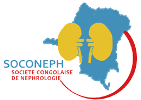Jean-Robert Makulo1*, Karen Efombola Itokua2, Rosette Kevani Lepira2, Gloire Mavinga Bundutidi2, Michel Ntetani Aloni2, René Makuala Ngiyulu2, Jean Lambert Gini2 and François Bompeka Lepira1
Abstract
Background: The serum ferritin assay is recommended in Sickle Cell Anemia (SCA) patients receiving regular transfusions. According to several authors, elevated iron stores indicating iron chelation corresponds to hyperferritinemia ≥500 ng/ml, and becomes detectable after twenty blood transfusions. The objectives of the study were to determine the prevalence of elevated iron stores and identify associated risk factors in a case series of
Steady state SCA Congolese children.
Material and methods: Serum ferritin was assayed in Steady state SCA children followed in 2 specialized hospitals in Kinshasa. Elevated iron stores was defined as serum ferritin level ≥ 500 ng/ml, and the associated risk factors were identified using univariate analysis.
Results: Seventy patients (median age 9 years, 56% boys, 53% receiving hydroxyurea) were selected in the study.
Serum ferritin levels ranged from 24 to 2584 ng / ml with 21.4% of children having elevated iron stores. Mean levels of LDH, indirect bilirubin, plasma free Hb and CRP were similar between the 2 groups whereas history of polytransfusions (> 3 during the last year) was more frequent among patients with elevated iron stores (73% vs.44%, p = 0.078). Receiving > 3 transfusions in a year vs. 0 was the main risk factor associated with elevated iron stores [OR 6.17 (95% CI: 1.81–20.96)].
Conclusion: In SCA children, hyperferritinemia requiring iron chelation is most strongly related to blood transfusion.
This situation concerned almost one in five children in present study; this shows the magnitude of the problem which is underestimated.
Keywords: Sickle cell anemia, Elevated iron stores, Polytransfusions, DR Congo
Makulo et al. BMC Hematology (2019) 19:3
https://doi.org/10.1186/s12878-019-0134-7
